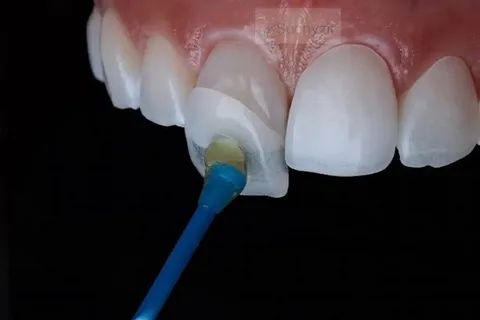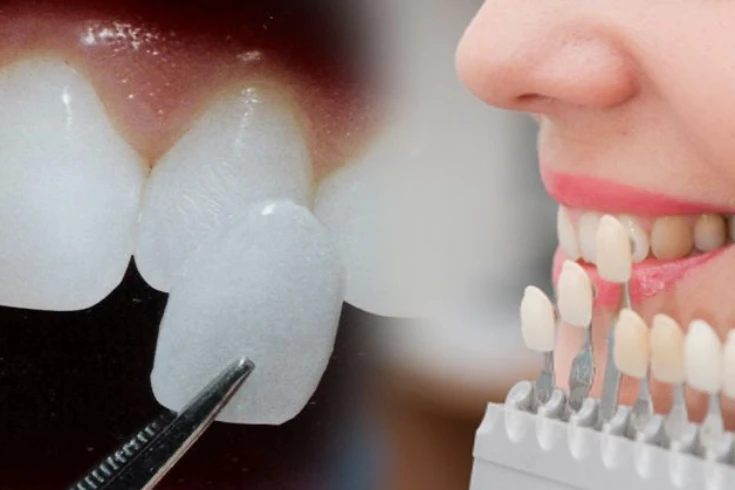When talking about tooth fillings there are different types of tooth fillings that you can choose to have. Gold teeth fillings and gold teeth replacement represents a timeless solution in dental care, offering both durability and aesthetic appeal.
Traditionally crafted from pure gold or a gold alloy, these restorations boast exceptional strength and longevity, outlasting many alternative materials. Whether you’re seeking gold teeth repair for a damaged gold filling or considering a gold teeth replacement, the benefits are clear.
Gold teeth fillings provide unmatched durability, withstanding the rigors of daily wear and tear while maintaining their integrity for decades. Moreover, their distinctive shine adds a touch of luxury to your smile, elevating your overall dental aesthetics. Modern dental techniques ensure a seamless process for gold teeth repair or gold teeth replacement, restoring both function and beauty to your teeth when needed.
How is Gold teeth filling Done?
A dentist performs the process of gold teeth filling to repair a cavity or damage in a tooth using a gold alloy. Here is the overview of the procedure:
- Examination: The dentist begins by examining the tooth to assess the extent of the damage or decay. The doctor may take X-rays to determine the severity of the problem and to ensure that a gold filling is the appropriate treatment.
- Preparation of the Tooth: After deciding to proceed with a gold filling, the dentist administers local anesthesia to numb the area around the tooth. This ensures that the patient remains comfortable throughout the procedure. Next, the dentist removes the decayed or damaged portion of the tooth using a dental drill or other tools.
- Impressions: After the tooth is prepared, the dentist takes impressions of the tooth using dental putty or digital scanning technology. These impressions are used to create a custom-made gold filling that fits the tooth precisely.
- Fabrication of the Gold Filling: The dentist will send impressions to a dental laboratory. The skilled technicians use the information to fabricate the gold teeth filling. The filling typically consists of a mixture of gold and other metals to improve its strength and durability.
- Placement of the Gold Filling: The patient returns to the dentist for the placement. The dentist first checks the fit and adjusts the filling if necessary. Then, the filling is bonded securely to the tooth using dental cement or adhesive.
- Polishing and Adjustment: After the filling is in place, the dentist polishes it to ensure a smooth and natural-looking surface. Dentist remove any access material and check the bite to ensure it feels comfortable and natural.
- Post-Treatment Care: The dentist gives the patient instructions on caring for the newly filled tooth, including practicing proper oral hygiene and following dietary guidelines.
What are the Types of Gold Teeth Repair?
There are different types of gold teeth filling repair. Some of them are:
- Filling Repair: If a gold filling becomes damaged, the dentist may repair it by removing any decay or damage, reshaping the filling, and polishing it to ensure a proper fit and function.
- Crown or Bridge Repair: For damaged gold crowns or bridges, the dentist may repair them by removing any damaged or worn-out portions, reshaping them, and bonding them back into place.
- Reattachment: In the event that a gold crown or bridge becomes loose or dislodged, a dentist can typically reattach it using dental cement or adhesive.
What is the Process for the Repair?
Renowned for their durability and longevity, gold teeth fill cavities effectively. However, like any dental restoration, they may occasionally require repair due to wear, damage, or decay. Below are the good teeth filling repair process:
- Evaluation: The first process in gold teeth filling repair process is by examining the damaged gold filling to assess the extent of the repair needed.
- Removal and tooth preparation: After the evaluation, the damaged or decayed portions of the existing gold filling will be removed. The dentist will prepare the surrounding tooth structure to ensure proper adhesion of the new filling material.
- Restoration: Depending on the extent of the damage, the dentist may add new gold material to rebuild or reinforce the filling. The dentist securely bonded the tooth structure with the repaired gold filling.
- Finishing: Dentist shape and polish the repaired gold filling to ensure a smooth surface and proper fit with the surrounding teeth. Your dentist may make adjustments to ensure that your bite is comfortable and properly aligned.
- Post-Procedure Care: Maintain good oral hygiene habits, including regular brushing and flossing.
Why Should You Go for Gold Teeth Replacement?
Gold, unlike other materials, boasts exceptional strength and resilience, promising a lasting solution to tooth loss or damage. Its biocompatibility ensures compatibility with the body, making it a safe choice for a wide range of individuals. Some of the reasons for performing gold teeth filling replacement include:
- Durability: Dentists use gold fillings due to their exceptional strength and longevity. Unlike traditional amalgam or composite fillings, which may degrade over time, gold teeth filling can last for decades with proper care. This durability ensures that a gold filling can withstand daily wear and tear. It provides a reliable and long-lasting solution for dental restorations.
- Biocompatibility: Gold exhibits biocompatibility, as the body tolerates it well and it is unlikely to induce allergic reactions or sensitivities. Gold fillings are an excellent choice for individuals with sensitivities to other materials. They are also suitable for those concerned about potential adverse reactions. Additionally, gold teeth filling do not corrode or leak, further contributing to safety.
- Aesthetic Appeal: Gold may not be the most traditional choice for dental fillings. However, it offers a unique aesthetic appeal that many individuals find attractive. The subtle shine of gold can add a touch of luxury to the smile, creating a distinctive and sophisticated look. Additionally, gold fillings can be custom-crafted to match the color and contours of the natural teeth.
- Minimal Tooth Preparation: Compared to some other filling materials, gold fillings often require minimal tooth preparation. This results in the need to remove less of the natural tooth structure to fit the filling, which helps preserve more of the healthy tooth tissue. Furthermore, to accurately fit the contours of the tooth, gold fillings exhibit high adaptability, thereby reducing the necessity for extensive tooth preparation.
To explore our teeth filling and other services, check out our Teeth Filling Service.
Frequently Asked Questions
Are gold teeth fillings noticeable when smiling?
Gold teeth fillings may be visible when smiling. This is particularly true for posterior teeth. However, their metallic appearance is less conspicuous compared to other materials.
Are gold teeth fillings more expensive than other types?
Yes, gold teeth fillings have a higher initial cost. This is mainly due to the high price of gold and the intricate craftsmanship involved.
When should gold teeth fillings be replaced?
Gold teeth fillings may need replacement if they become worn, loose, or if there is decay around them. Regular dental check-ups can help determine when replacement is necessary.
How long does it take to replace a gold teeth filling?
The size of the gold tooth filling affects the duration of the procedure. If the dentist finds that additional dental work is necessary, they may need to extend the time required for the filling procedure. It typically involves two appointments: one for preparation and impression and another for placement.
Will a repaired gold teeth filling match the color of the existing teeth?
Skilled dental craftsmanship ensures that a repaired gold teeth filling seamlessly blends with the natural color and texture of the surrounding teeth, providing a natural-looking result.





